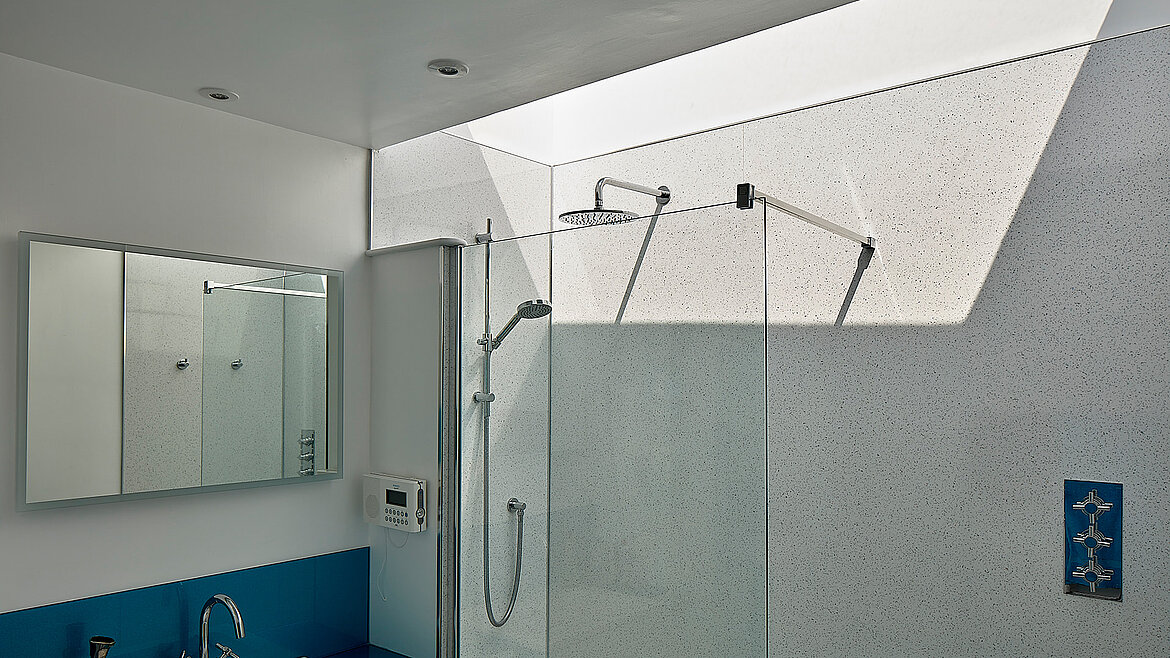Window placement tips for more daylight and well-being
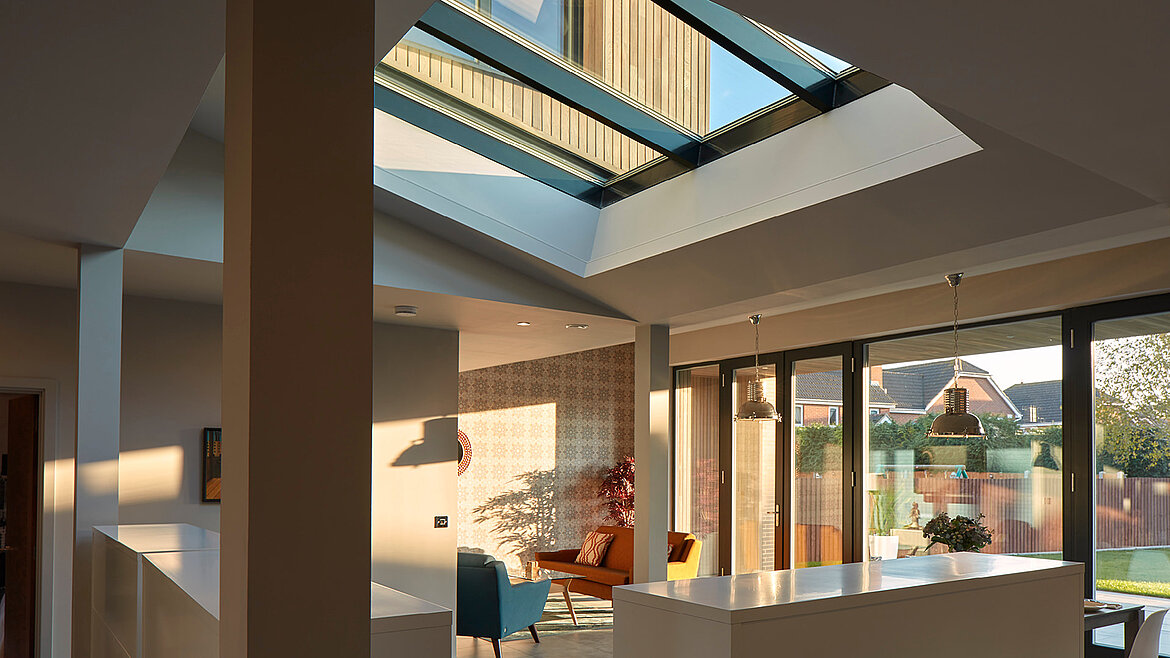
Daylight is a key factor for comfort in our living spaces. Especially when building or renovating a home, it’s worth taking a closer look at light direction and window layout. In an interview, architect Julia Jantos explains how well-thought-out window planning and daylight can make living spaces brighter, more pleasant, and more energy-efficient – and why skylights play a special role. We also cover energy efficiency, costs, and planning. You’ll learn everything you need to know about the right window layout and learn some window placement tips for your home.
Proper Window Surface Per Room
Balancing the wishes and needs of homeowners with the on-site conditions – that’s the main reason why Julia Jantos chose to become an architect after training as a draftsperson: “I wanted to design buildings myself, not just draw what my boss told me to.” For Julia Jantos, every building project is unique. She enjoys designing and evolving with each project. But regardless of how unique each building may be, there’s one thing every homeowner and architect should consider from the start: plan window placements early to include enough natural light sources!
“Especially in rooms where we spend most of our time – such as the living or dining room – natural light and the right window layout are extremely important. We all feel it: bright, sunlit spaces make us feel energised and well. And why would you want to miss out on that in your own home?” According to Julia Jantos, there are also some general guidelines: “A room of 10 square meters should have windows of at least 2 to 2.5 square meters. That’s about 20 to 25 percent of the room size.”
Key window placement tips at a glance:
- Prioritise large window areas in living and dining rooms
- Calculate 20–25% of the room’s area for ideal window surface
- Plan early – retrofitting can be costly
Window Layout – Essential Window Placement Tips You Should Consider
The orientation of the building also plays a crucial role in window planning to achieve maximum energy efficiency and light. “Large south-facing windows allow for solar heat gains and ample daylight, which improves the energy balance and reduces heating costs,” Julia Jantos explains. She adds: “North-facing windows should be limited to reduce heat loss. East-facing rooms like kitchens, bedrooms, or home offices benefit from the morning sun, which helps us wake up and gives us energy. For relaxing spaces, west-facing windows are ideal, as the afternoon and evening sun creates a cosy atmosphere and supports sleep.”
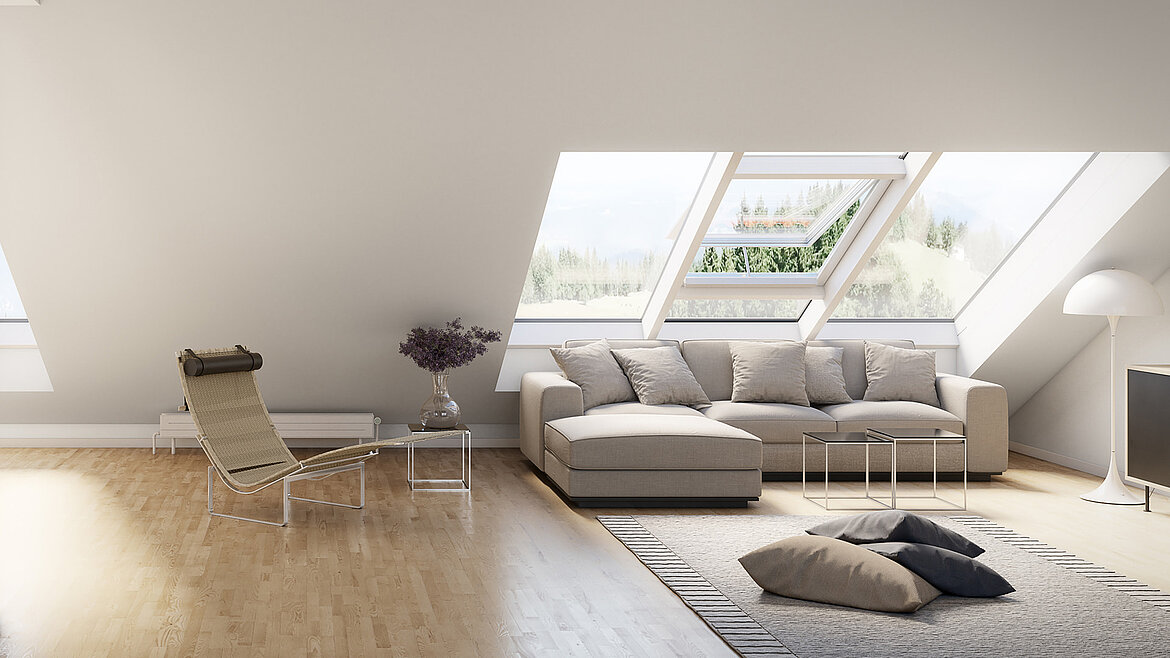
Effective sun protection through awnings, shutters, or blinds should also be part of the initial planning to avoid overheating and glare in summer. Attics and loft conversions, in particular, require exterior shading.
Window Placement Tips for Energy Efficiency and Thermal Protection
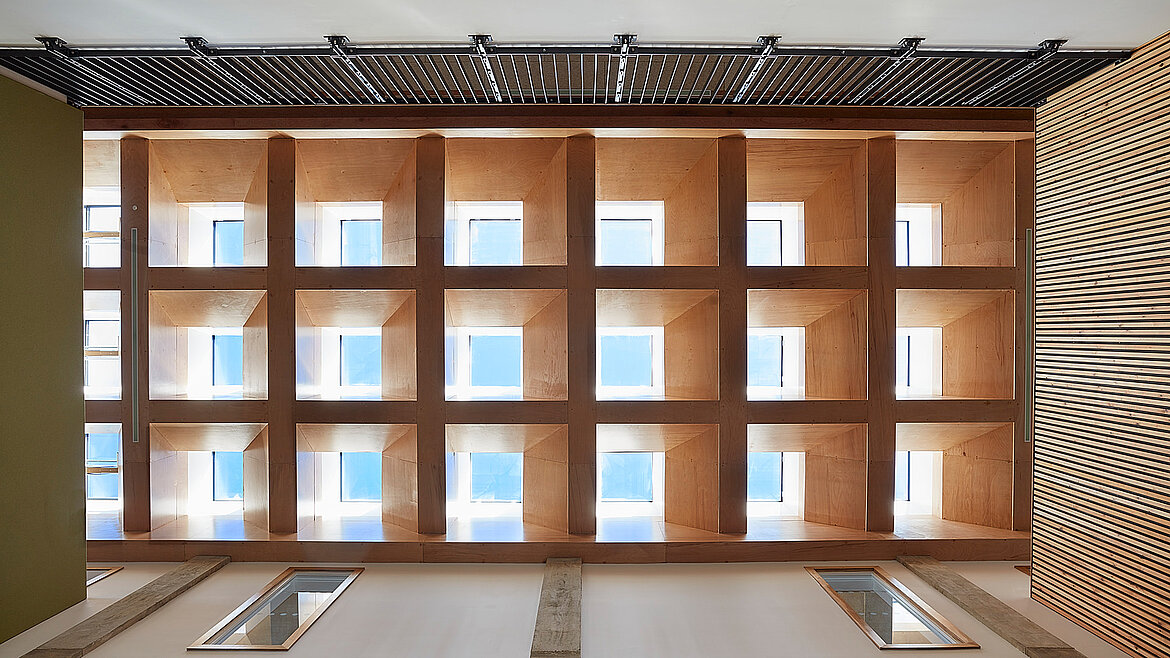
Energy efficiency and thermal protection are also key considerations. Thoughtful window planning enhances not only comfort but also energy savings.
Use high-performance elements early in your planning:
- Thermal insulation glazing
- Durable materials like aluminium or uPVC
- Triple glazing
- Thermally optimised frames
In some regions, Passivhaus-certified windows are worth the investment – offering premium insulation for long-term savings and sustainability.
Window Placement Tips for Optimal Daylight Supply
Windows in façades aren’t the only source of natural light in homes. Skylights and rooflights such as flat roof windows and light domes also enhance daylight access. “Skylights significantly increase the amount of daylight and improve the even distribution of light in a room,” Julia Jantos explains. Upper floors often don’t require artificial light at all, thanks to skylights. “ Daylight entering from above transforms the architectural space and illuminates certain areas more effectively than façade windows.” Hallways and stairwells in upper levels also benefit. “Ceiling openings and galleries create stunning spatial impressions and generous sightlines to lower floors.” Skylights can create synergies between daylight usage and spatial design, resulting in a harmonious, well-lit ambiance.
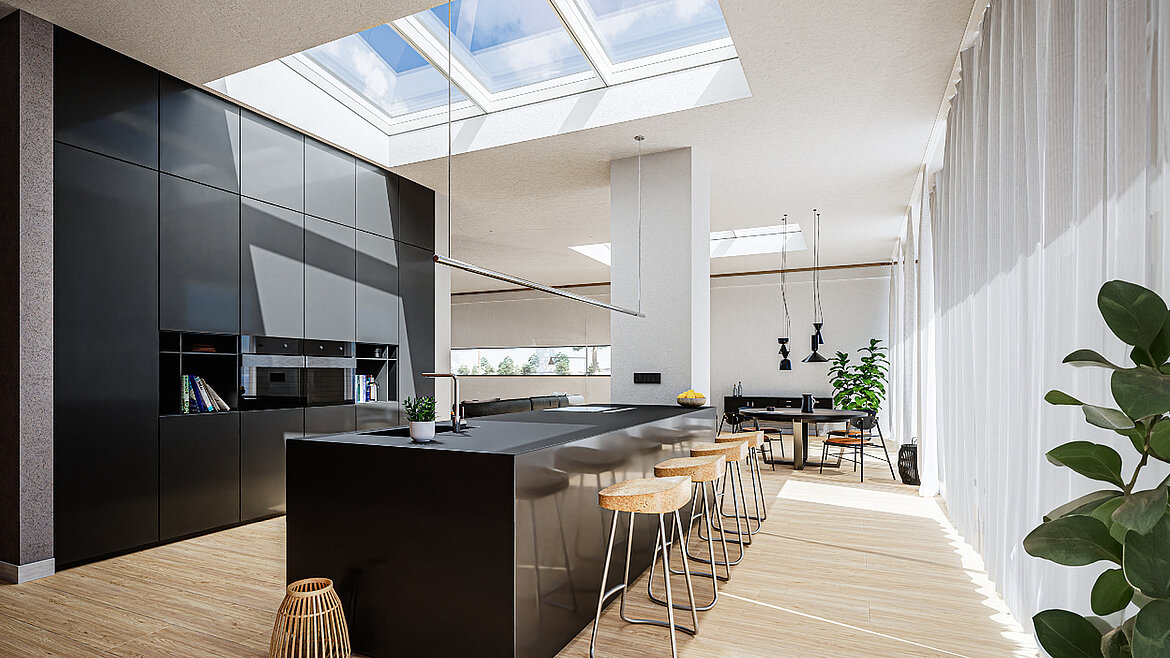
Window Placement Tips: Choosing the Right Material
Planning your windows also means choosing the right frame material. Whether you opt for uPVC, aluminium, or wood – each material has its advantages and disadvantages.
- uPVC: Affordable, low-maintenance, good insulation
- Wood: Natural aesthetics, sustainable, needs regular care
- Aluminium: Durable, modern, perfect for large window surfaces
- Hybrid (e.g., wood-aluminium): Cosy interiors with weather-resistant façades

Window Placement Tips: Get Expert Support

Planning your windows involves much more than simply choosing size, shape, and material. To achieve maximum daylight, optimal energy performance, and long-term comfort, a well-thought-out concept is essential – one that includes the right window to floor ratio.
This ratio – the size of the window area compared to the floor area of a room – plays a critical role in ensuring sufficient daylight and improving the overall spatial experience. Getting this balance right requires more than just gut feeling.
That’s why involving experts like architects, energy consultants, or manufacturers such as LAMILUX early in the process is wise. They help select the right materials, configure windows precisely, and coordinate installation. Integrating shutters or external sun protection should also align with window planning. Professional planning prevents costly changes later and ensures a cohesive, well-thought-out building concept.
Costs, Subsidies, and Financing for Windows
Costs are often a key concern when planning windows. High-quality windows are an investment – but one that pays off through energy savings and improved comfort. Look into:
- Subsidy programmes (grants or low-interest loans)
- Eligible systems (energy-efficient windows, modern roof windows, automated shading)
- Tailored planning: Align window layout with your energy goals and budget
Window Placement Tips After Construction: How to Optimise Existing Homes
Not all houses were built with perfect daylight in mind. But there are ways to improve:
Julia Jantos’ first tip – with a smile – is: “Clean your windows regularly, so daylight can actually get in.” Furniture like sofas and dining tables should be near windows, unlike wardrobes which block light. “Mirrors have a special effect,” says Julia Jantos. “Hung opposite a window, they reflect sunlight and make rooms appear even brighter.” Wall colours also help: “Light walls reflect light better than dark ones. That’s why dark flooring should also be avoided.”
Skylights can be retrofitted more easily than many think. Learn all about installing skylights afterward in our related article “Criteria for skylights” or inform yourself about a modular glass skylight .
